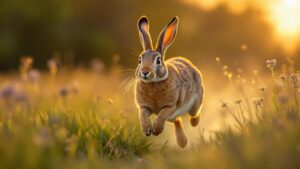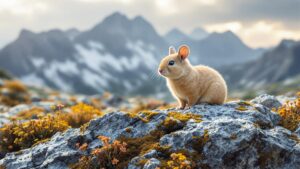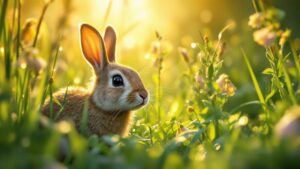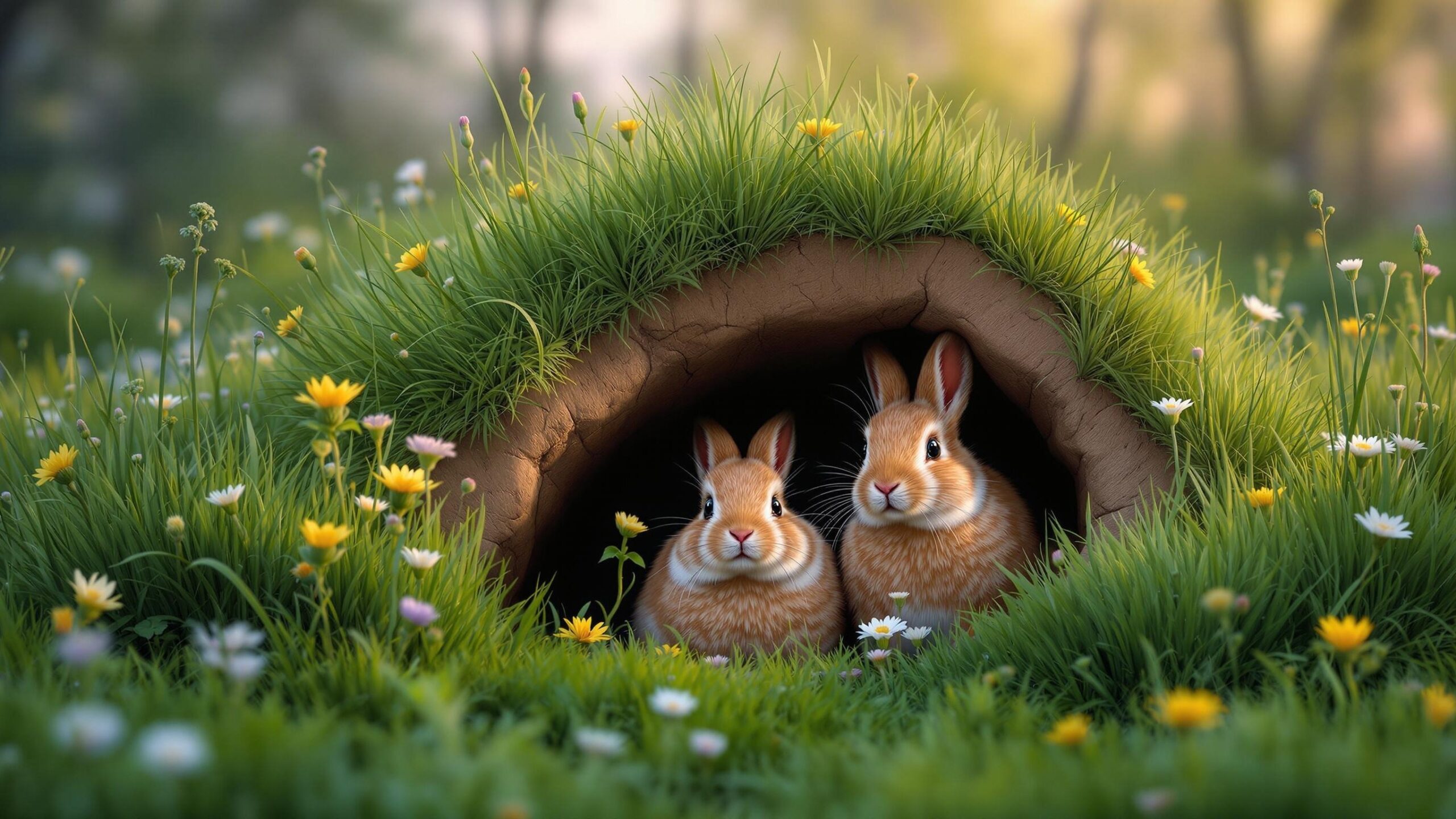Rabbits, Hares, and Pikas: Nature’s Nimble Navigators of Field and Mountain
From the gentle rustle of grass in a spring meadow to the echo of chirps across alpine slopes, the world of rabbits, hares, and pikas pulses with quiet yet profound energy. These small mammals, often dismissed as mere prey animals, are actually resilient survivors, ecological contributors, and symbols of agility, fertility, and seasonal change. Found on nearly every continent and in nearly every biome, they are integral to the health of ecosystems and the traditions of human culture. Classified under the order Lagomorpha, rabbits, hares, and pikas are not rodents, though they are often mistaken as such. Lagomorphs have distinct biological features that set them apart, including an extra pair of incisors behind their main front teeth, a strictly herbivorous diet, and unique digestive systems that allow for efficient nutrient extraction from tough plant material. Though they are small and often elusive, their impact is vast, spanning predator-prey dynamics, seed dispersal, cultural symbolism, and even climate indicators. This article will journey through the diverse and fascinating world of these three groups—rabbits, hares, and pikas—offering insight into their adaptations, lifeways, and ecological roles, while highlighting some of the most iconic species within each group.

Hares
Hares: Nature’s Fleet-Footed Survivors of the Open Wild Hares, members of the genus Lepus, are swift, alert, and remarkably well-adapted creatures that have captivated naturalists, artists, and storytellers for centuries. Known for their long limbs, keen senses, and solitary lifestyles, hares stand apart from their close relatives, the rabbits. While they may seem similar at first glance, hares have their own unique evolutionary story, one that has unfolded in the

Pikas
Pika: The Tiny, Tenacious Voice of the Mountains Tucked among the boulders of alpine talus slopes and the cool meadows of Asia and North America lives a creature that might seem unassuming at first glance, yet it plays a pivotal role in mountain ecosystems. The pika, a small, round-bodied mammal belonging to the genus Ochotona, is a close relative of rabbits and hares, though it carves out a life quite

Rabbits
Rabbits: Nature’s Nimble Nomads of Field and Forest From their twitching noses and long ears to the powerful hind legs that carry them in bursts across open meadows, rabbits are among the most beloved and widespread mammals on Earth. They are instantly recognizable yet surprisingly complex, creatures that have played roles in mythology, science, agriculture, and the wild ecosystems of every continent except Antarctica. Whether nibbling clover in a backyard
Rabbits: Underground Architects and Global Companions
Rabbits are perhaps the most familiar of the lagomorphs, found in backyards, fields, forests, and homes. With their rounded bodies, large ears, and powerful hind legs, rabbits have become symbols of cuteness and caution, known for their twitchy noses and rapid reproduction. Species like the European rabbit, eastern cottontail, and brush rabbit showcase the group’s adaptability to different environments. Most rabbits are burrowers, living in complex tunnel systems called warrens that provide shelter, safety from predators, and stable microclimates. These underground habitats play a significant ecological role, aerating soil and supporting plant diversity. Rabbits are crepuscular, active mainly at dawn and dusk, and feed on grasses, herbs, and woody plants, digesting their food twice through a process called hindgut fermentation. Rabbits are prey for a wide variety of carnivores, including foxes, hawks, and snakes, and their population dynamics often mirror the health of surrounding ecosystems. Domesticated rabbits, originally descended from wild European rabbits, are now common pets and agricultural animals raised for meat, fur, and manure. They are intelligent, social, and capable of forming strong bonds with humans.
Hares: Sprinting Survivors of the Open Landscape
While closely related to rabbits, hares differ in several key ways. They are generally larger, with longer legs and ears, and they do not dig burrows. Instead, hares live above ground, relying on speed and camouflage to evade predators. They give birth to fully furred, open-eyed young called leverets, ready to move shortly after birth. Hares are creatures of open landscapes—meadows, plains, tundra, and deserts. Species like the snowshoe hare, Arctic hare, and European brown hare exhibit seasonal coat changes or coloration adapted to their environments. The snowshoe hare’s white winter fur, for example, offers camouflage in snowy forests, while the jackrabbit’s large ears help dissipate heat in arid habitats. Hares are vital components of many food chains. The snowshoe hare, in particular, has a well-documented predator-prey cycle with the Canada lynx, a relationship that has been studied as a classic example of ecological population oscillation. Hares also influence vegetation through browsing and seed dispersal, and their alert, solitary nature makes them symbols of independence and vigilance.
Pikas: The Alpine Alarm Callers
Pikas are the least known members of the lagomorph family, yet they are among the most remarkable. Small, round, and tailless, pikas live in cold, rocky environments at high altitudes, especially in Asia and North America. They are adapted to harsh climates, using rock piles for shelter and storing vegetation—called haypiles—for winter food. North American pikas, such as the American pika, live in mountainous regions like the Rockies and the Sierra Nevada. They do not hibernate, which makes their summer food collection vital to winter survival. These animals are famous for their high-pitched warning calls and for being sensitive indicators of climate change, as rising temperatures threaten their alpine habitats.
Asian pikas inhabit a range of mountainous areas across central Asia and the Himalayas. Though similar in appearance to their North American cousins, they exhibit a wider range of behaviors, with some species living in colonies and others leading solitary lives. In traditional Asian medicine, pikas have even been hunted, though they are increasingly being recognized for their ecological value. Pikas are ecosystem engineers in their own right, helping with soil development and plant distribution in alpine areas. Their haying behavior affects vegetation patterns, and their tunnels provide shelter for other species. These little mammals are among the most climate-sensitive animals on Earth, acting as sentinels of environmental change.
Ecological Roles: More Than Prey
Though often considered prey animals, rabbits, hares, and pikas fulfill crucial roles in ecosystems. Their grazing habits influence plant communities, promote grassland health, and shape forest undergrowth. By dispersing seeds, trimming vegetation, and enriching soil through their droppings, they contribute to biodiversity and habitat maintenance. They are also key prey for countless predators. A single population of rabbits or hares can support entire communities of raptors, felines, canids, and reptiles. In alpine systems, pikas are one of the few sources of high-energy prey, sustaining foxes and birds of prey in remote regions. Additionally, lagomorphs affect fire regimes, erosion patterns, and vegetation succession. Their burrows can prevent compaction, while overpopulation in some cases leads to agricultural conflict and land degradation. This dual role—as keystone species and potential pests—highlights the importance of balanced populations and informed management strategies.
Cultural Significance: Symbols of Spring, Speed, and Story
Lagomorphs have long held a place in human mythology and storytelling. In many cultures, the rabbit is a lunar figure, associated with rebirth, cleverness, and the rhythms of nature. The hare appears in African, Asian, and European folk tales, often as a trickster or wise creature who uses speed and wit to outmaneuver enemies. In Western traditions, the Easter Bunny traces its roots to pagan symbols of fertility and spring, later Christianized into a symbol of renewal. In Native American stories, hares are heroes and teachers. Pikas, less mythologized, are increasingly becoming icons of conservation and climate awareness. Domesticated rabbits are part of many children’s lives, appearing in literature, film, and art as companions and adventurers. They are also central to culinary traditions in various cultures and were once considered delicacies in medieval Europe.
Scientific Contributions and Conservation Challenges
Lagomorphs have aided science in fields ranging from genetics to ecology. Rabbits were foundational in the development of the rabies vaccine and continue to be used in ophthalmological research. Wild lagomorphs are model organisms for studying population ecology, adaptation, and predator-prey interactions. However, many species face serious threats. Habitat loss, hunting, disease, and climate change endanger dozens of rabbit, hare, and pika species worldwide. The European rabbit, once introduced to Australia, became an invasive species causing ecological disruption, while native rabbits in the Iberian Peninsula now struggle to survive due to habitat fragmentation and disease. Pikas are especially vulnerable to warming temperatures, as they rely on cold climates and have limited dispersal capabilities. Conservationists monitor their populations as early warning systems for climate change effects. Habitat corridors, protected areas, and ecological studies are key to preserving these animals.
Celebrating the Silent Contributors
Rabbits, hares, and pikas are quiet contributors to the grandeur of nature. They do not roar or rule with strength, but they sustain ecosystems, inspire cultures, and warn of changes in the environment. Their biology is as remarkable as their adaptability, and their presence is a marker of balance in the landscapes they inhabit. To understand lagomorphs is to understand how nature works in cycles of reproduction, predation, vegetation, and climate. They are living indicators of health and harmony, and their survival reflects our stewardship of the wild world. As you explore the sub-categories and individual species of rabbits, hares, and pikas, may you see beyond the twitch of a nose or the flash of a white tail. There’s a world of complexity and wonder in their lives—stories of instinct, ingenuity, and endurance waiting to be discovered. Let this be the beginning of that journey.

